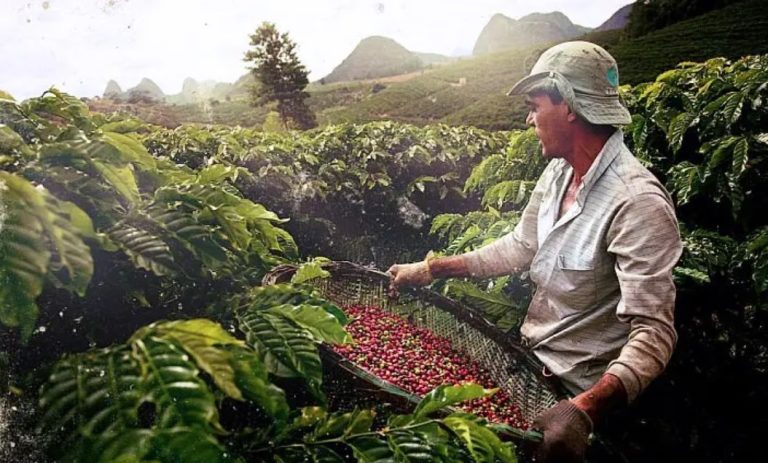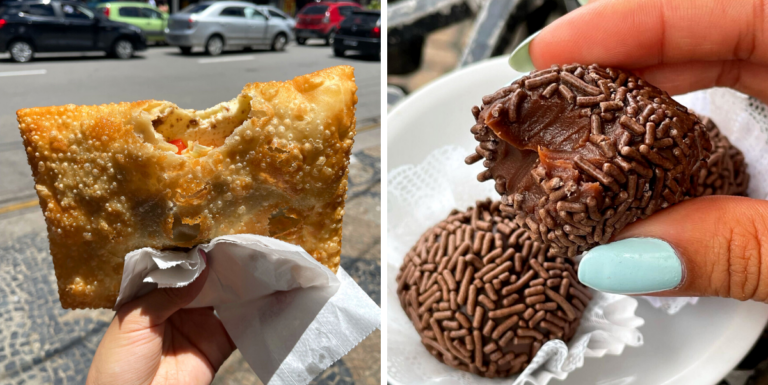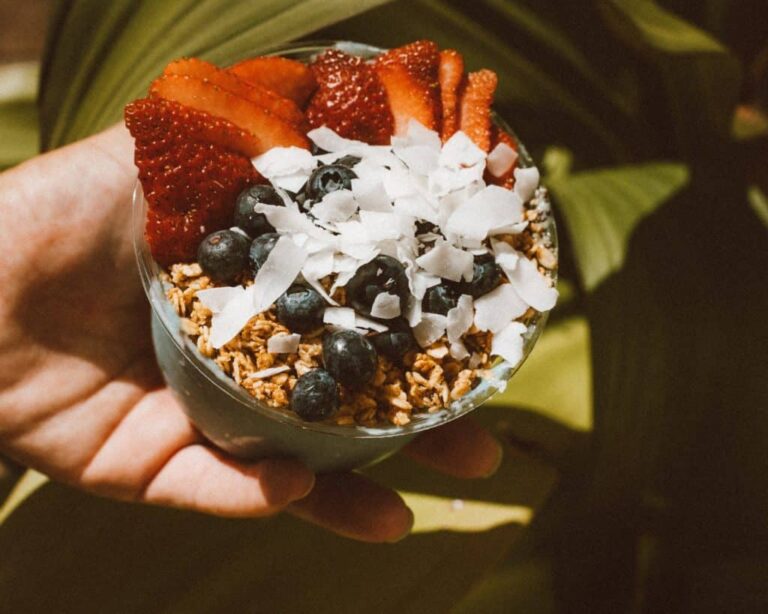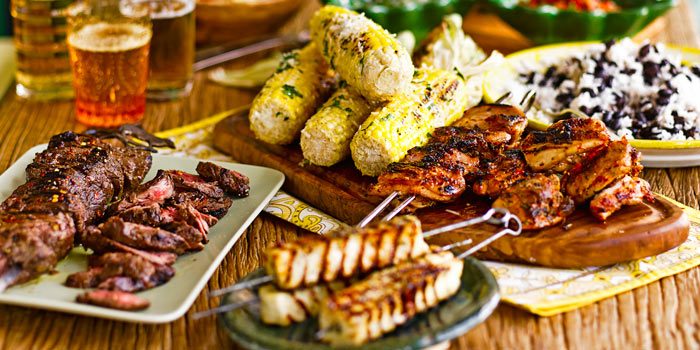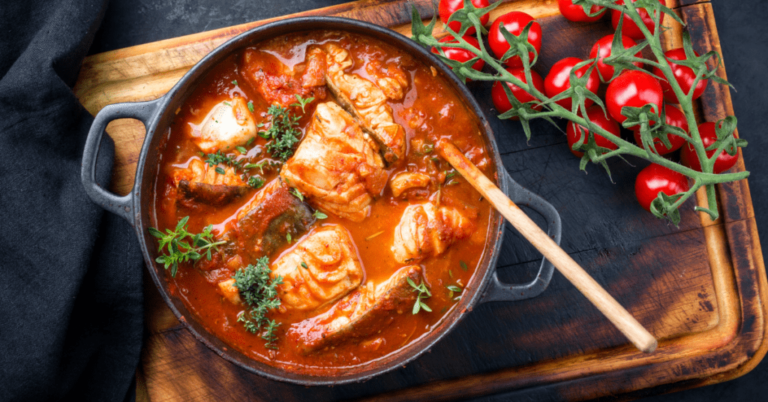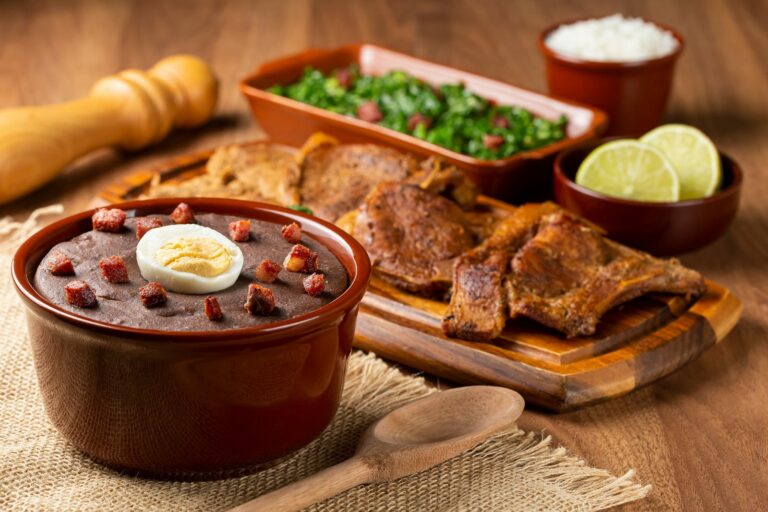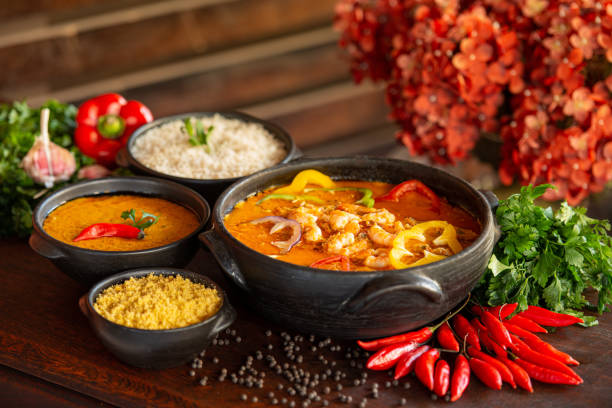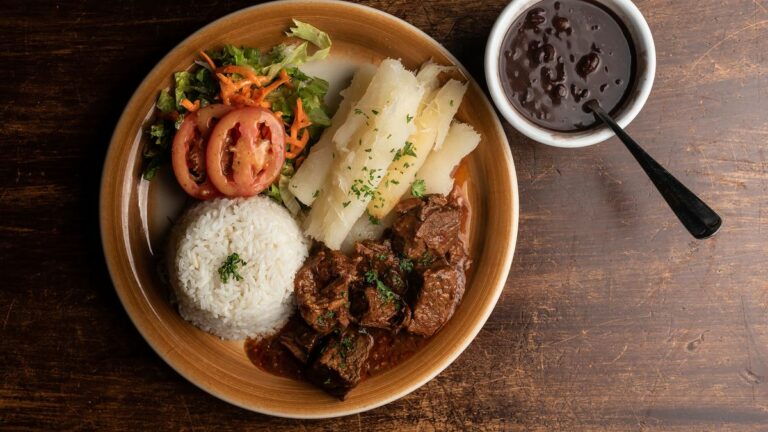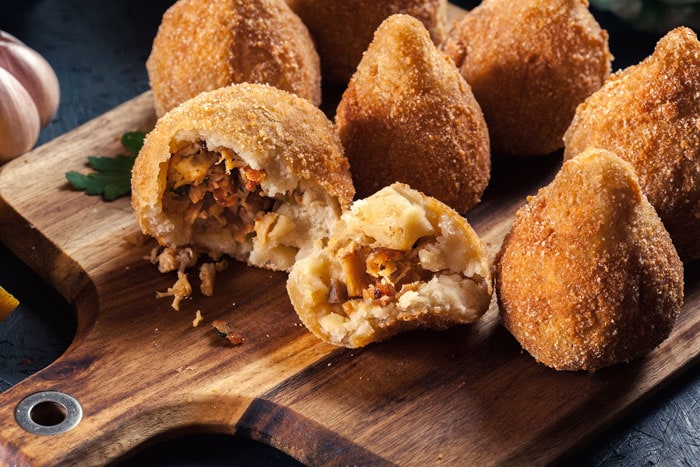Introduction: Brazilian Cuisine and Local Ingredients
Brazilian cuisine is renowned for its vibrant and diverse flavors, and its use of fresh, locally-sourced ingredients. From the Amazon rainforest to the Atlantic coast, Brazil boasts a rich array of ingredients that have helped shape its culinary traditions. Some of the most popular Brazilian dishes feature native fruits, vegetables, and seafood, along with staples such as rice, beans, and cassava.
Thanks to a long history of cultural exchange and migration, Brazilian cuisine also incorporates influences from African, European, and indigenous cultures. This unique blend of flavors and traditions has made Brazilian cuisine one of the most exciting and flavorful in the world.
Feijoada: The National Dish of Brazil
Feijoada is perhaps the most iconic Brazilian dish, and is often referred to as the country’s national dish. A hearty stew made with black beans, pork, and beef, feijoada is typically served with rice, collard greens, and farofa (toasted cassava flour).
Although its origins are unclear, feijoada is widely believed to have been developed by Brazilian slaves in the 19th century, who would use leftover cuts of meat and beans to create a filling and nutritious meal. Today, feijoada is enjoyed by people of all backgrounds across Brazil, and has even gained popularity in other parts of the world.
Moqueca: A Flavorful Seafood Stew
Moqueca is another beloved Brazilian stew, typically made with fish or seafood, coconut milk, palm oil, and a variety of herbs and spices. Hailing from the northeast region of Brazil, moqueca is known for its rich and complex flavors, which are enhanced by the use of local ingredients such as dendê oil (derived from the fruit of the oil palm tree) and fresh cilantro.
There are several regional variations of moqueca, each with its own unique ingredients and cooking techniques. One popular version is moqueca capixaba, which hails from the state of Espirito Santo and features fish, tomato, onion, and garlic, along with dendê oil and coconut milk.
Pão de Queijo: A Cheesy Bread Snack
Pão de queijo, or “cheese bread,” is a simple but delicious Brazilian snack made with cassava flour, cheese, eggs, and butter. The dough is formed into small balls and baked until crispy on the outside and chewy on the inside.
Originally from the state of Minas Gerais, pão de queijo has become a popular snack throughout Brazil and beyond. It is often enjoyed with coffee or as an appetizer, and its cheesy, savory flavor makes it a crowd-pleaser at any gathering.
Brigadeiro: A Sweet Chocolate Truffle
Brigadeiro is a beloved Brazilian sweet treat, typically made with condensed milk, cocoa powder, butter, and chocolate sprinkles. The mixture is cooked over low heat until it thickens, then rolled into small balls and coated in sprinkles.
Although its origins are uncertain, brigadeiro is said to have been created in the mid-20th century as a patriotic treat to celebrate Brazil’s independence. Today, it is a staple at Brazilian celebrations and can be found in bakeries and cafes throughout the country.
Coxinha: A Fried Chicken Snack
Coxinha is a popular Brazilian snack made with shredded chicken, cream cheese, and spices, which are wrapped in a dough made with wheat flour and potato. The dough is then shaped into a teardrop or drumstick shape, breaded, and deep-fried until crispy.
Coxinha is said to have originated in the state of São Paulo in the early 20th century, and has since become a beloved snack throughout Brazil. It is often enjoyed as a quick bite on the go, or as a party food.
Acarajé: A Deep-Fried Bean Fritter
Acarajé is a flavorful bean fritter that hails from the state of Bahia. Made with black-eyed peas, onion, and spices, the mixture is formed into small balls and deep-fried until crispy. The fritters are then sliced open and filled with a spicy mixture of shrimp, palm oil, and spicy peppers.
Acarajé is a staple of Bahian cuisine, and is often sold by street vendors in the region. It is also an important part of Afro-Brazilian culinary traditions, and is often served as a symbol of identity and resistance.
Caipirinha: The National Cocktail of Brazil
No discussion of Brazilian cuisine would be complete without mentioning the country’s national cocktail, the caipirinha. Made with cachaça (a distilled spirit made from sugarcane juice), lime, and sugar, the caipirinha is a refreshing and flavorful drink that is enjoyed by people across Brazil.
Although its origins are unclear, the caipirinha is believed to have been developed in the early 20th century as a way to make cachaça more palatable. Today, it is a staple of Brazilian nightlife and is often enjoyed at bars, clubs, and restaurants throughout the country.



